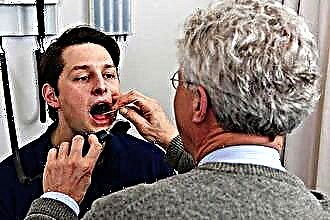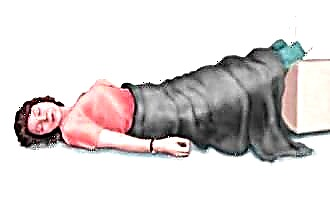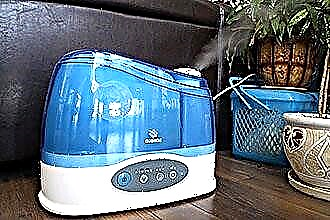 Treatment of an abscess in the throat consists in draining the purulent cavity and the use of disinfectant, antiphlogistic and antimicrobial drugs. Conservative therapy without preliminary opening of the abscess often does not give the desired therapeutic results. Untimely removal of purulent contents entails the development of neck phlegmon or sepsis.
Treatment of an abscess in the throat consists in draining the purulent cavity and the use of disinfectant, antiphlogistic and antimicrobial drugs. Conservative therapy without preliminary opening of the abscess often does not give the desired therapeutic results. Untimely removal of purulent contents entails the development of neck phlegmon or sepsis.
If signs of an ENT disease are detected, the patient should undergo surgical and anti-relapse drug treatment.
Etiology
The development of an abscess is associated with the penetration of pyogenic microbes into the respiratory system. When foci of inflammation occur, immune cells - phagocytes, T-lymphocytes, granulocytes, etc., migrate to the affected areas of the tissue with the blood flow. As a result, a limited cavity of fibrous tissue is formed, which prevents the spread of purulent exudate into healthy tissues of the laryngopharynx.
The abscess is characterized by polymorphism and largely depends on the localization of the inflammation focus, its size and the causative agent of the infection. The classic symptoms of an abscess in the throat include:
- hyperemia of the mucous membrane;
- swelling of soft tissues;
- subfebrile fever;
- lymph node hypertrophy;
- soreness when swallowing.
Fluctuation (accumulation of serous effusion and pus) is the main symptom, indicating the development of an abscess in the mucous epithelium of the laryngopharynx.
The principles of treatment are determined by the type of disease. In otolaryngology, there are three main types of abscesses localized in the throat:
- periopharyngeal - purulent inflammation of tissues in the periopharyngeal region;
- retropharyngeal - the formation of purulent exudate near the lymph nodes located in the pharyngeal space;
- paratonsillar - rotting of the periaminal fiber.
The formation of an abscess in the laryngopharynx is often preceded by infectious diseases such as lacunar tonsillitis, aphthous stomatitis, bacterial pharyngitis, sinusitis, sinusitis, etc. Purulent inflammation occurs when the immune defense is weakened, which is facilitated by local hypothermia, mucosal injury, vitamin deficiency, and chronic diseases.
Treatment principles
Therapy should be started when the first signs of an abscess in the throat appear. Spontaneous opening of the abscess capsule leads to the penetration of pathological secretions into healthy tissues, which is fraught with the appearance of phlegmon. Treatment of ENT diseases is carried out on an outpatient basis under the supervision of an otolaryngologist or infectious disease specialist.
The classical treatment regimen involves the implementation of the following therapeutic measures:
- opening of a purulent cavity;
- suction of pathological exudate;
- disinfection of the operated area;
- taking antibacterial drugs;
- undergoing hyposensitizing therapy.
Immunocompromised patients often experience relapses of the disease. To prevent the recurrence of an abscess, it is more advisable to remove not only the purulent contents, but also the walls of the pathological cavity. Surgical excision of abscesses can be done with a laser or scalpel.
Surgical intervention
How to eliminate throat abscess? Treatment of ENT disease must begin with surgery. Ripe abscesses require a mandatory autopsy, since spontaneous emptying entails the spread of infection and the development of complications.
A simple operation is performed on an outpatient basis and takes no more than 15-20 minutes. The process of opening and draining the purulent cavity is as follows:
- anesthesia of the operated area with Lidocaine solution;
- incision of an abscess in the area of greatest tissue swelling;
- expansion of the wound followed by the introduction of a Hartmann syringe into the purulent cavity;

- drainage of the abscess and treatment of soft tissues with a disinfectant solution.
After the operation, the patient needs dispensary observation for several days.
Surgical treatment is prescribed for patients suffering from recurrent paratonsillitis, lacunar or follicular angina. To reduce the likelihood of re-formation of pus in the laryngopharyngeal mucosa, it is necessary to take antibacterial and anti-inflammatory drugs.
Antibacterial therapy
After aspiration of purulent exudate, patients should undergo antibiotic therapy. Taking drugs with antimicrobial action helps to destroy pyogenic bacteria not only in the lesions, but throughout the body. For the treatment of sores in the throat, medications of a wide spectrum of action are used:
- "Ceftazidime" - eliminates infectious and inflammatory reactions in the mucous membranes that occur during the development of otitis media, paratonsillitis, mastoiditis, sinusitis, phlegmon, etc .;
- "Levofloxacin" - destroys the DNA gyrase of pyogenic bacteria, thereby accelerating the regression of pathological reactions in soft tissues;
- "Rovamycin" - accumulates in macrophages, which contributes to the early destruction of gram-positive and intracellular microbes;
- "Flemoklav Solutab" - inhibits the development of pyogenic bacteria that produce the enzyme beta-lactamase;
- "Wilprafen" - destroys the cell membranes of pathogenic bacteria, which leads to their death.
The duration of antimicrobial therapy is 10-14 days, depending on the dynamics of the regression of inflammatory processes. Premature interruption of the course can cause a relapse of the ENT disease, therefore, it is impossible to refuse to take medications even if you feel better.
Hyposensitizing therapy
Septic inflammation of soft tissues leads to the development of allergic reactions. Metabolites of pyogenic bacteria provoke poisoning of the body, as a result of which edema of the affected tissues occurs. Untimely elimination of infectious and allergic processes can lead to asphyxia.
The treatment regimen for abscesses localized in the laryngopharynx includes antihistamine drugs. They interfere with the synthesis of inflammatory mediators, which accelerates the regression of pathological reactions in the mucous epithelium.
To eliminate local symptoms of pathology, the following can be used:
- "Peritol" - binds to histamine receptors, which leads to a decrease in their sensitivity and, accordingly, regression of allergic reactions;
- "Diazolin" - prevents the production of prostaglandins, as a result of which the concentration of inflammatory mediators in the ciliated epithelium decreases;
- "Bicarfen" - reduces the sensitivity of serotonin receptors, thereby eliminating allergic reactions in soft tissues;
- "Diprazine" - blocks the work of histamine receptors and promotes the resorption of infiltrates in the foci of inflammation.
Overdose of drugs can lead to impaired coordination of movements and tachycardia. Antihistamines have a decongestant and antiphlogistic effect on the tissue of the larynx, which reduces the likelihood of stenosis of the throat.They should be taken in conjunction with antibiotics, as they do not kill the infectious agent.
Symptomatic drugs
Palliative therapy is aimed at eliminating the local manifestations of a throat abscess. The treatment regimen includes aerosols for extinguishing the oropharynx, lozenges, gargles, and immunostimulants. The choice of drugs depends on the severity of the disease and the age of the patient. The following medications can prevent the re-accumulation of pus in the paratonsillar and periopharyngeal region:
| Drug type | Drug name | Operating principle |
|---|---|---|
| non-steroidal anti-inflammatory drugs |
| reduce temperature, relieve pain and accelerate epithelialization of tissues affected by inflammation |
| rinsing solutions |
| disinfect mucous membranes and normalize tissue trophism, which accelerates the regeneration of the mucous epithelium |
| immunostimulating agents |
| increase nonspecific immunity and tissue reactivity, thereby reducing the likelihood of recurrence of purulent inflammation |
| antipyretic drugs |
| inhibit the activity of thermoregulation centers, as a result of which heat exchange with the environment is accelerated |
| throat extinguishing aerosols |
| inhibit the activity of pyogenic bacteria, relieve inflammation and restore the integrity of the mucous membranes |




